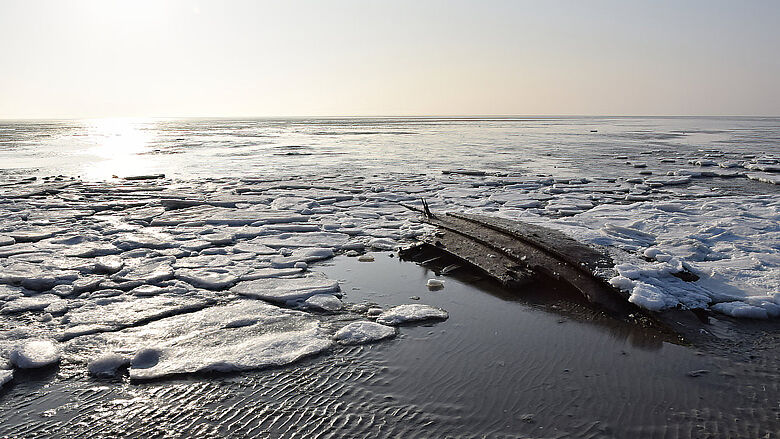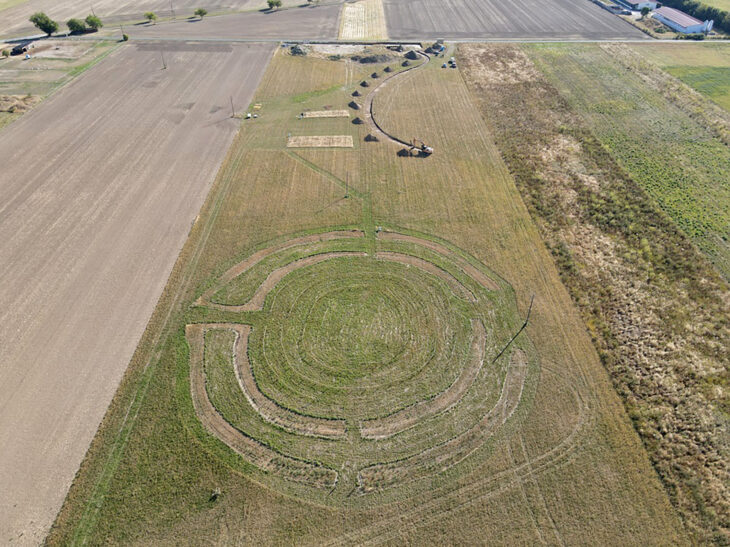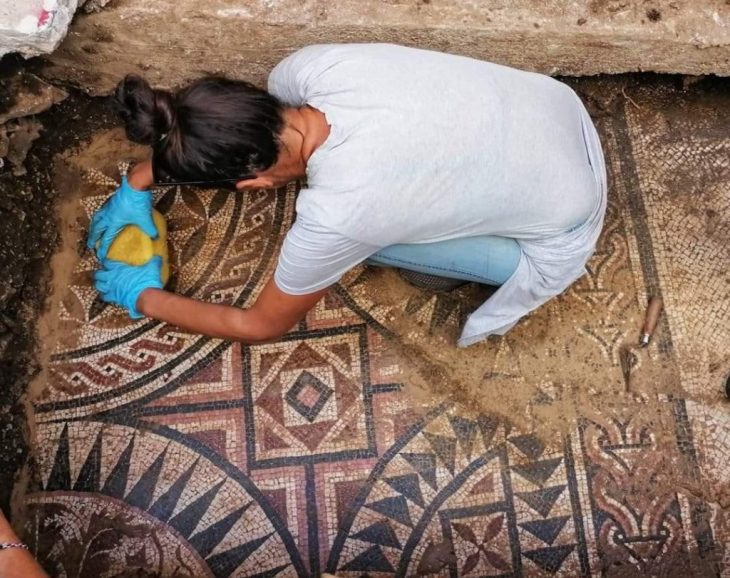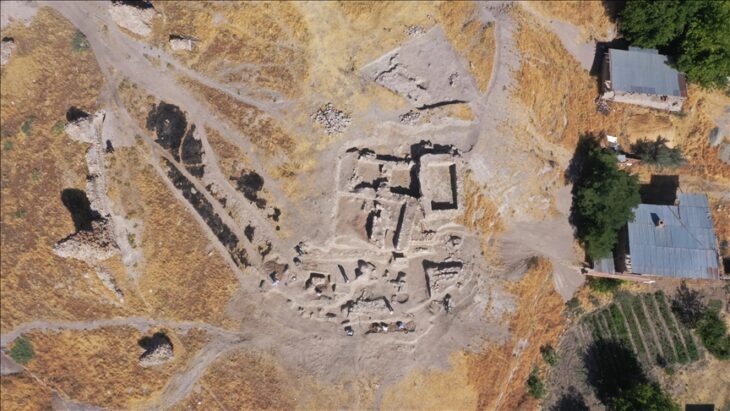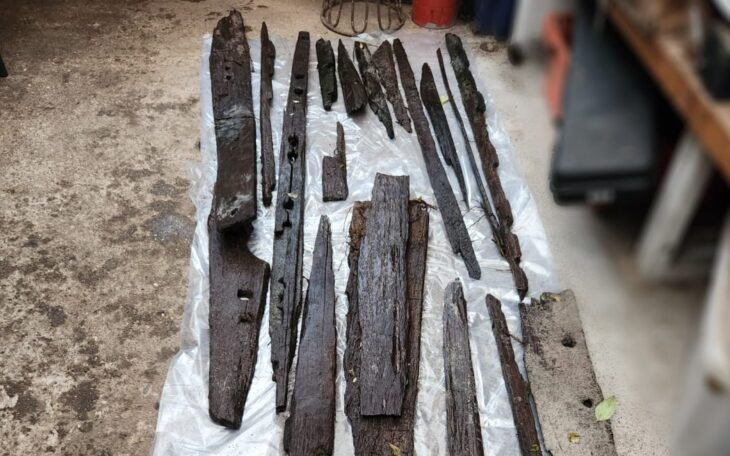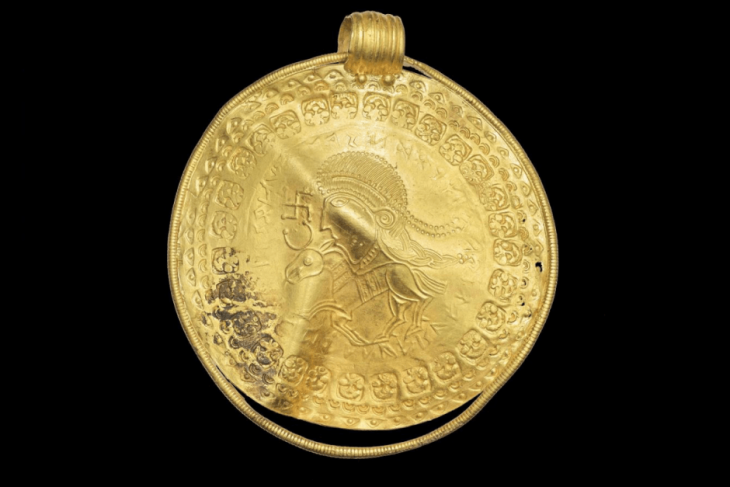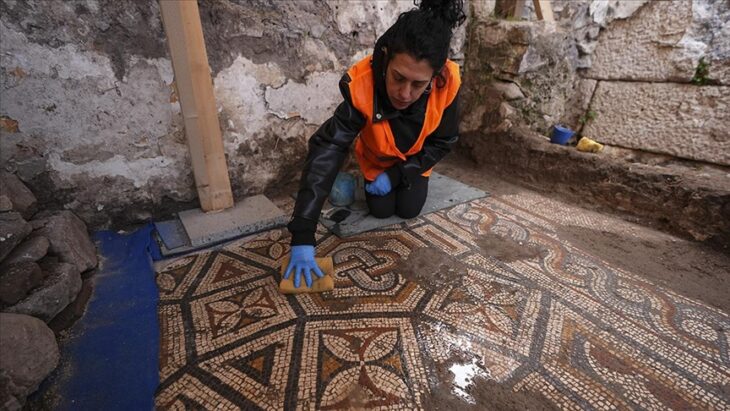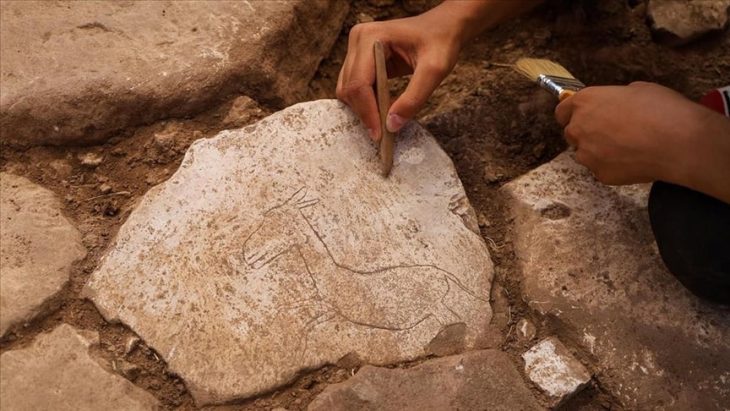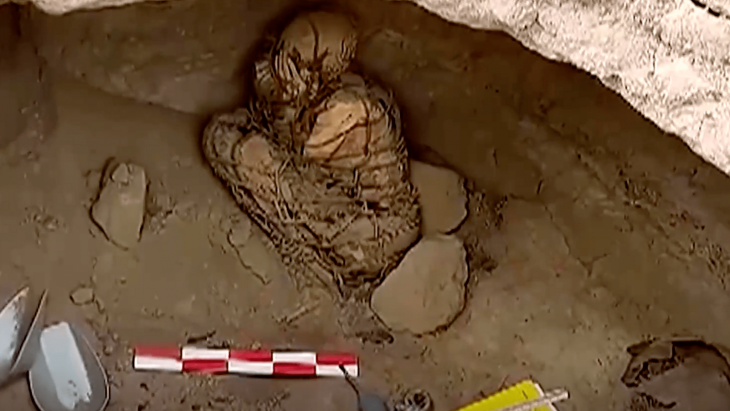A section of a wooden shipwreck was uncovered near Rantum, a coastal village located on the island of Sylt in northern Germany.
Following the passage of storm “Bernd,” the North Sea has once again revealed a piece of its tumultuous history. On January 12, 2025, a section of a wooden shipwreck was uncovered near Rantum. Beachgoers discovered the remains on the shore and reported the find to local historian Gunter Schröder, who promptly forwarded the information to the Archaeological State Office of Schleswig-Holstein.
Such discoveries are not uncommon along the North Sea coast. Due to strong westerly winds and historical maritime trade routes, numerous ships have stranded or sunk off the coast over the centuries. In 2016, a wreck was uncovered at Hörnum Odde, and shortly thereafter, three more wrecks emerged on Süderoogsand. The remains of the “Ulpiano,” which sank off the coast in 1817, are also well-known. These finds testify to the perilous conditions of seafaring and the often tragic fates that unfolded off the North Frisian coast. Today, the wrecks serve as valuable archaeological evidence that must be carefully documented.
To properly investigate the newly found wreck, staff from the Archaeological State Office traveled to the island on January 20, 2025, to document it. Unfortunately, the North Sea proved unpredictable: just two days after the discovery, the wreck was completely buried under sand, and subsequent searches were unsuccessful. Due to tidal conditions, a suitable time window must be awaited to carry out the work. Consequently, the documentation of the site and the collection of wood samples have been delayed. However, based on the copper bolts visible in the reported photos of the ship’s construction, it can already be inferred that the wreck belongs to a wooden sailing ship from the 19th to 20th century.
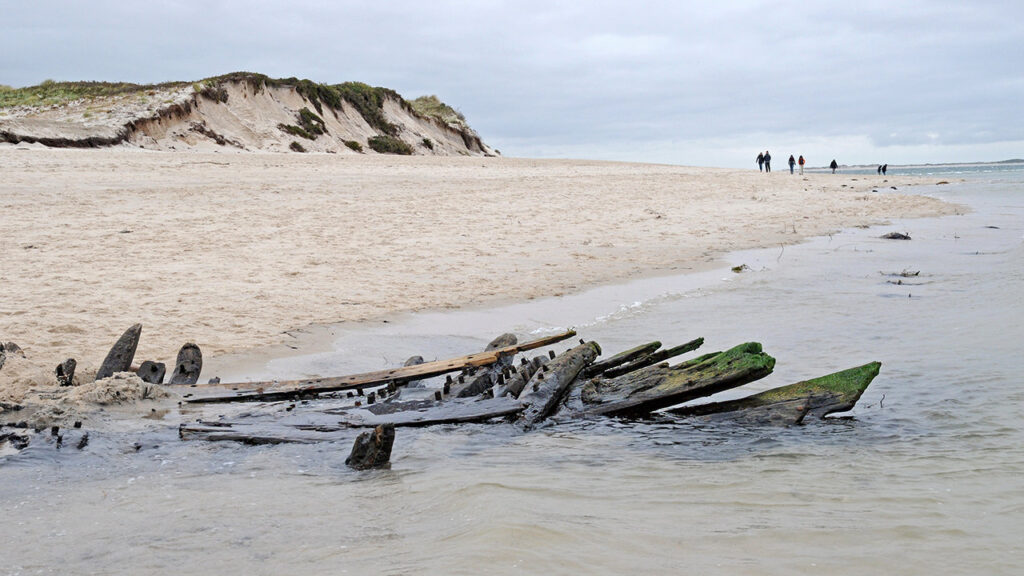
The recently reported wreck find near Rantum adds to a remarkable series of discoveries in the North Frisian Wadden Sea. In recent years, more wrecks have been uncovered that testify to long-gone eras:
📣 Our WhatsApp channel is now LIVE! Stay up-to-date with the latest news and updates, just click here to follow us on WhatsApp and never miss a thing!!
October 2016 – Hörnum Odde Wreck (circa 1690)
February 2017 – Japsand Wreck (circa 1609)
February/March 2022 – Süderoogsand Wrecks (Wreck 1 circa 1733; Wreck 2 undated; Wreck 3 circa 1904)
These finds raise the question of whether they indicate profound changes in the coastal landscape. Are they related to increasing coastal erosion due to climate change, or do they reflect a heightened public interest and a new awareness of the significance of such relics? Likely, both factors play a role.
The history of strandings in the North Frisian Wadden Sea is well documented. For the period from the 17th century to the early 20th century, hundreds of stranding reports exist, increasingly detailing incidents from the outer sands of Japsand, Norderoogsand, and Süderoogsand. During the age of sailing ships, the onshore winds of the North Sea posed a deadly threat to vessels. Without natural harbors or protected anchorages, captains were forced to anchor in the open surf zone—a often futile endeavor. A rare exception was the Königshafen at List on Sylt. However, even there, not every shipwreck could be prevented: in 1752, the Dutch merchant ship AMSTELLAND stranded despite its proximity to the seemingly safe bay. The disaster left lasting marks, and to this day, a headland bears the name “Ostindienfahrerhuk.”
The treacherous coastal topography forced merchant ships to avoid the region—a task that often failed, especially during strong westerly winds. The North Frisian outer sands became a death trap, and strandings were so frequent that they established an entire economic sector. The recovery of flotsam and the rescue of shipwrecked individuals were part of the daily life of coastal residents, and the dyke master was responsible for organizing these operations on behalf of the duke.
The recent finds once again bring the rich maritime history of the North Frisian Wadden Sea into focus. Whether they are a consequence of climate change or an increased awareness remains an intriguing question for scientists and the interested public alike.
Cover Image Credit: The wreck found at Japsand near Hallig Hooge. Photo: © ALSH

